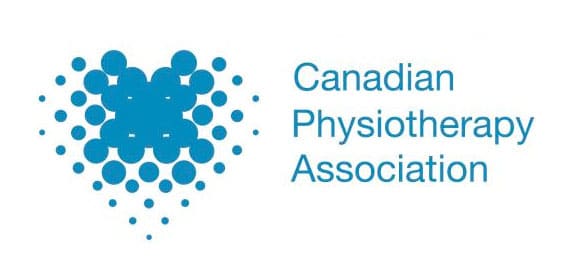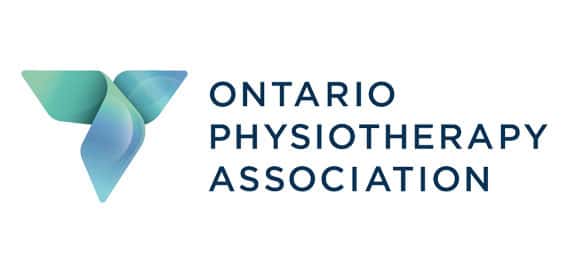
Physiotherapy Etobicoke







Best Physiotherapy Etobicoke
For the City of Toronto, our West End Headquarters is located at 968 & 972 Albion Road, Etobicoke, M9V 1A7. Etobicoke is an area with proximity to the Toronto Pearson Airport, and Lake Ontario. It is our flagship location operating to give the citizens of Toronto a premium location to come seek wellness and rehabilitation with the help of our expert therapists. This center provides our healthcare services to citizens residing around Albion, Islington, West Way, Kipling Avenue and beyond.
We offer all physiotherapy, chiropractic and massage therapy services at the centre along with state-of-the-art equipment that provides all our clients with the latest medical treatment for achieving their mobility goals.
Meet Our Teams
CENTRE OF EXCELLENCE
Experienced and Highly Trained Therapists
FAQ
Physiotherapy plays a crucial role in the journey of healing and regaining strength after suffering from various injuries, whether they're due to sports activities, workplace incidents, or automobile accidents.
Effective Pain Relief
Physiotherapy uses specific techniques to manage and alleviate pain. Through manual therapy, targeted exercises, and treatment options like ultrasound and heat therapy, a physio can help reduce inflammation and soothe discomfort. This tailored approach provides relief that medication alone might not achieve.
Enhanced Mobility and Functionality
Injuries often impede movement, causing stiffness and limiting one's ability to perform everyday tasks. Physiotherapy focuses on improving range of motion and joint flexibility, empowering individuals to regain their mobility and participate in daily activities with greater ease.
Strengthening and Conditioning
Beyond immediate recovery, physiotherapy emphasizes building muscle strength and conditioning. By engaging in exercises designed to enhance physical performance, individuals can reduce the risk of re-injury and ensure a more robust recovery path.
Preventative Care and Long-Term Health
Integrating physiotherapy into your recovery plan isn't just about addressing the present injury. It involves assessing body movement patterns to identify potential issues and teaching proper body mechanics. This proactive approach significantly reduces the likelihood of future injuries, supporting ongoing wellness and active participation in life.
In summary, physiotherapy is more than just a rehabilitation tool; it is a comprehensive strategy for pain relief, mobility restoration, and sustainable health improvement.
Absolutely, patients can often engage in exercises independently as part of their rehabilitation journey. However, it’s crucial to first understand your specific condition and the recommended treatment protocol.
Here’s how to get started:
- Consultation is Key: Have a detailed discussion with your physiotherapist. They will tailor exercises to fit your unique needs, ensuring you're targeting the correct areas without causing harm.
- Education and Understanding: Make sure you fully grasp the mechanics and objectives of each exercise. This knowledge ensures you’re executing them properly and safely, which is essential for effective recovery.
- Monitoring Progress: Regularly check in with your therapist. They can adjust your plan as needed, helping you progress and avoid plateauing.
By diligently following this approach, you can enhance your recovery process and manage pain more effectively. Always listen to your body; if something feels off, it’s wise to pause and reach out to your healthcare provider.
Navigating your first physiotherapy session may feel daunting, but understanding the process can ease your apprehensions. Here’s a breakdown of what typically unfolds during a session:
Comprehensive Evaluation
Your journey begins with a thorough evaluation. The physiotherapist will dive into understanding your specific condition and needs. This involves discussing your medical history and scrutinizing any symptoms impacting your daily life.
Goal Setting Together
Collaboration is key. You'll work with your physiotherapist to set realistic goals. Whether it’s regaining mobility, achieving independence, or returning to a sport you love, tailored objectives will guide your treatment plan.
Crafting a Personalized Plan
Once goals are established, your therapist will create a customized treatment and prevention strategy. This plan will consider your lifestyle, activities, and general health to ensure it fits seamlessly into your routine.
Use of Tools and Techniques
Depending on your condition, the therapist might recommend exercises, suggest braces, or employ techniques to enhance your recovery. These tools are tailored to support your path to recovery or injury prevention.
Every session aims to empower you with knowledge and methods to improve your quality of life, all while focusing on what matters most to you.
Embarking on your physiotherapy journey can feel a bit daunting, but knowing what to expect can ease your worries. Here's a breakdown of what typically unfolds during an initial session at a physiotherapy clinic:
Initial Assessment
The appointment begins with an in-depth evaluation. A physiotherapist will take the time to gather your medical history and ask about your current issues. This conversation is key as it helps in crafting a comprehensive understanding of your condition.
Physical Examination
Following the assessment, you'll undergo a physical examination. This step involves your physiotherapist checking various aspects such as mobility, strength, and pain levels. This hands-on approach allows them to pinpoint areas that need attention.
Personalized Treatment Plan
Drawing from the insights gleaned from both the assessment and examination, a customized treatment plan is developed. This plan is designed to match your specific needs and may feature a mix of therapies, including manual therapy, graded exercise routines, and possibly modalities like laser or NEMS (Neuro Electrical Muscle Stimulation).
Regular Treatment Sessions
Once your treatment plan is in place, you’ll schedule regular visits. During these sessions, the physiotherapist will guide you through the exercises and therapies outlined in your plan, keeping track of your progress and tweaking any elements as necessary to optimize recovery.
Home Exercise Program
To bolster your clinic sessions, you may receive a set of exercises to practice at home. These are crucial for maintaining progress and accelerating healing outside the treatment room.
Each clinic might have slightly different protocols, but generally, these are the key elements you can expect during your initial physiotherapy visit.
Benefits of Physiotherapy: Enhancing Mobility and Building Strength
In the realm of recovery, physiotherapy stands out for its multifaceted benefits, especially when it comes to restoring mobility and boosting strength. Here's how it can make a transformative difference:
Enhancing Mobility
Experiencing limited movement due to injury is a common hurdle. Through personalized therapeutic approaches, physiotherapy helps in gradually increasing your range of motion and enhancing joint flexibility. This tailored regimen aims at getting you back to your daily routines smoothly and efficiently.
Strengthening and Conditioning
Physiotherapy provides targeted exercise programs designed to fortify your muscles. This not only aids in improving overall functional movement but also plays a crucial role in minimizing the risk of re-injury. By focusing on these exercise routines, you can expect to see marked improvements in your physical performance over time.
By integrating these strategic approaches, physiotherapy serves as a foundation for rebuilding your strength and reclaiming your mobility. With dedication and the right guidance, it empowers you to move better and live more fully.
Understanding the Benefits of Being Treated by a Registered Physiotherapist
Choosing a registered physiotherapist offers numerous advantages, ensuring you receive the highest standard of care. But what exactly sets them apart?
Expertise Backed by Education
Registered physiotherapists undergo rigorous academic training and clinical practice. This extensive education equips them with a profound understanding of the human body's intricate systems. They are well-versed in anatomy, physiology, and biomechanics, enabling them to diagnose and treat a range of conditions effectively.
Comprehensive Care
A registered physiotherapist's thorough knowledge allows them to create personalized treatment plans. They consider your medical history and current health status, ensuring each therapy session targets your specific needs. This personalized approach helps in faster recovery and long-term health benefits.
Assurance of Professional Standards
When you seek treatment from a registered professional, you are assured of ethical practice. They must adhere to strict professional standards and are often required to keep their skills updated through continuing education.
Holistic Treatment Approach
Registered physiotherapists look beyond just the symptoms. They focus on the root causes of pain or discomfort, which leads to more sustainable health outcomes. Their holistic approach often includes education about posture, exercises, and lifestyle modifications.
Reliable and Trustworthy Care
With a registered physiotherapist, you can rest assured that you are in safe hands. Their credentials and professional affiliations often mean they are recognized by health insurance providers, making your treatment more accessible and affordable.
In conclusion, the benefits of opting for a registered physiotherapist extend beyond expertise; they incorporate trust, reliability, and a commitment to your overall well-being.
Home exercises are a pivotal part of a patient’s journey toward recovery, significantly impacting the healing process. When guided by a physiotherapist, these exercises extend the benefits of your clinic sessions right into the comfort of your home. By consistently performing these tailored activities, you can experience several advantages:
- Enhanced Recovery Speed: Home exercises help maintain the momentum gained during your in-clinic visits, promoting quicker healing.
- Increased Muscle Strength: Regular practice helps build muscle strength and flexibility, essential for restoring full mobility.
- Pain Management: Targeted exercises can alleviate discomfort and reduce inflammation, helping you manage pain effectively between physiotherapy sessions.
- Independence: They empower patients to take an active role in their recovery, fostering greater independence and confidence in their physical abilities.
- Consistency in Progress: Daily exercises ensure that your body adapts continuously, providing a steady path to progress.
Incorporating these exercises into your routine not only complements professional treatment but also maximizes overall results, ensuring you recover efficiently and effectively.
When you walk into a physiotherapy appointment, the journey toward recovery begins with a detailed assessment. Here's what you can typically expect:
- Comprehensive Medical History Review:
The physiotherapist will gather a thorough history of your medical background. This includes any past injuries, surgeries, and ongoing health issues. The aim is to gain insight into factors that might affect your current condition. - Physical Examination:
A hands-on evaluation follows the history review. The physiotherapist will assess areas of pain, movement range, muscle strength, flexibility, and any signs of dysfunction. This examination helps pinpoint the root cause of your concerns. - Discussion of Symptoms and Concerns:You'll have the opportunity to discuss your specific symptoms and any goals you hope to achieve through therapy. Whether it's reducing pain, improving mobility, or enhancing overall quality of life, this dialogue shapes the treatment plan.
- Identifying Treatment Goals:
Based on your assessment, the physiotherapist will establish realistic and personalized treatment goals. These objectives guide the subsequent sessions and track your progress effectively. - Development of a Tailored Treatment Plan:With a clear understanding of your situation, a customized treatment plan is crafted. This plan may include exercises, manual therapy techniques, and possibly referrals to other healthcare professionals if needed.
The assessment is a critical first step to ensuring that the therapy you receive is specifically designed for your unique needs, paving the way for effective and efficient recovery.
Physiotherapy plays a crucial role in keeping injuries at bay by focusing on the way our bodies move. Skilled physiotherapists evaluate your unique movement patterns to pinpoint any inefficiencies or potential problem areas. This assessment helps highlight areas that could lead to injury if not addressed.
By analyzing these movement patterns, physiotherapists can craft a personalized plan. This plan often includes education on correct body mechanics and exercises tailored to strengthen weak muscles. These elements work together to create a more resilient body, reducing the risk of future injuries.
Key Contributions of Physiotherapy to Prevent Injuries:
- Movement Analysis: Detailed examination of how you move to identify areas at risk.
- Tailored Exercises: Design of specific exercise regimens that target weaknesses and imbalances.
- Body Mechanics Education: Guidance on adopting proper techniques for everyday activities, from lifting to walking.
Having a comprehensive strategy in place not only shields you from injury but also enhances overall body performance, ensuring you can live an active and healthy lifestyle.
Absolutely! Our physiotherapy clinics provide a range of services including Osteopath therapy, chiropractic care, and acupuncture. We aim to offer comprehensive care to address various health needs and conditions.
Explore the Range of Services
- Massage Therapy: Aimed at relieving muscle tension and enhancing circulation.
- Chiropractic Care: Focuses on diagnosing and treating musculoskeletal issues, often involving spinal adjustments.
- Acupuncture: A traditional Chinese medicine technique that uses fine needles to balance the body's energy flow.
Why Choose a Clinic with Diverse Services?
Having multiple services under one roof can streamline your treatment process and make it more convenient. It allows you to receive personalized care that may integrate different therapeutic approaches for optimal outcomes.
In summary, choosing a clinic that offers these varied services can be beneficial for both acute and chronic conditions, helping you achieve better overall health and wellness.
Physiotherapy sessions typically span between 30 to 90 minutes. However, the duration isn't the only variable in play. The number of visits you'll need depends significantly on several factors:
• Individual Assessment: Your physiotherapist’s evaluation of your specific condition is crucial. They'll consider the severity of your impairments and your past medical history to tailor the treatment plan.
• Condition's Nature: The type and extent of your condition will heavily influence the length and frequency of therapy. Some issues may improve with a single session, while others could require ongoing visits over several months.
Ultimately, the path to recovery is personalized, focusing on your unique needs and goals. By closely collaborating with your physiotherapist, you'll establish the most effective treatment plan for you.
After completing physiotherapy treatment, patients have several options to consider for maintaining and enhancing their physical health.
• Continue At-Home Exercises: Many individuals benefit from persisting with the exercises they learned during therapy. These can be done at home and are crucial for maintaining progress.
• Join a Gym Program: For those looking to enhance their fitness, enrolling in a gym program might be an effective step. Participating in structured workouts, often available at nearby Gym facilities.
• Return to Daily Activities: Some patients may find that they can smoothly transition back to their usual activities, applying what they've learned in therapy to their everyday life.
Before making a decision, it is vital to communicate with your physiotherapist about your individual goals and lifestyle. They can assist in crafting a personalized post-therapy plan that aligns with your aspirations and needs.
When you're considering physiotherapy, a common concern is whether the treatment will be painful or have any side effects. Here's what you need to know:
Pain During Physiotherapy
For most people, the experience of physiotherapy is not painful. However, it’s important to recognize that you might encounter some mild discomfort, particularly during your initial sessions. This sensation is often a result of your body adjusting to new stretches and exercises.
Everyone’s pain threshold is different, so while one person might feel only slight discomfort, another might experience it more intensely. It’s crucial to communicate openly with your therapist about any pain you feel. They can adjust the treatment plan to better suit your comfort level.
Side Effects of Physiotherapy
Physiotherapy is generally regarded as a safe and effective approach to enhancing recovery and rehabilitation. Research consistently underscores its benefits in improving conditions, aiding in the recovery process, and preventing future injuries. It is an essential component of many treatment plans, aiming to restore functionality and promote relaxation.
As with any medical treatment, there’s a possibility of experiencing some side effects, though they are usually minor. These can include muscle soreness or fatigue after a session, especially if your body is getting used to new physical activities. Such effects are typically temporary and subside as your body acclimatizes to the therapy.
If you have specific concerns or conditions, it's best to discuss these with your physiotherapist beforehand. They can tailor their techniques to minimize discomfort and ensure the best possible outcomes for your unique situation.
When preparing for a physiotherapy session, choosing the right clothing can make a significant difference in both comfort and treatment efficacy.
Opt for Loose-Fitting Clothes:
Loose clothing allows easy movement and makes it simpler for the physiotherapist to access and treat the affected area. Consider wearing items like a tank top for shoulder evaluations or shorts if you're dealing with knee issues.
Think About Accessibility:
Make it easy for your physiotherapist to access the area of interest. This might mean choosing clothing that can be easily rolled up or adjusted as necessary.
Prioritize Comfort and Flexibility:
Your visit may involve stretches or exercises, so fabrics that breathe and flex with your movements, such as cotton or athletic wear, can significantly enhance comfort.
Consider Specific Needs:
• Upper Body Focus: A sleeveless or loose short-sleeve shirt works well.
• Lower Body Focus: Shorts or pants that can easily be rolled up are advisable.
By taking these tips into account, you'll ensure both comfort and effectiveness during your physiotherapy sessions.
When considering physiotherapy, it's common to wonder if a doctor’s referral is necessary. Fortunately, in many cases, you can directly access physiotherapy services without needing a referral. Physiotherapy is widely regarded as a form of primary care in numerous healthcare systems.
However, while direct access is possible, checking with your insurance provider is crucial. Here’s why:
• Insurance Requirements: Some insurance companies might require a referral for reimbursement purposes. It's wise to contact your insurer to clarify their specific policy.
• Maximizing Coverage: Understanding your insurance plan could maximize your coverage benefits and prevent unexpected out-of-pocket costs.
• Streamlined Care: Even though a referral might not be mandatory, consulting with your doctor can be beneficial. It ensures that your physiotherapy is well-coordinated with any other treatments you are receiving.
Always verify your individual insurance details to ensure a smooth experience and avoid surprises.
Physiotherapy
Physiotherapy is a versatile field, capable of addressing a wide array of health concerns through specialized treatments and techniques. Depending on their area of expertise, physiotherapists can manage various issues effectively.
Orthopedic Physiotherapy
Orthopedic physiotherapy focuses on musculoskeletal problems, such as sports injuries and arthritis. Common conditions treated include back and neck pain resulting from skeletal and muscular disorders.
• Sports Injuries: Whether it’s a sprain, strain, or muscle tear, orthopedic physiotherapists can help athletes recover and regain strength.
• Arthritis: Treatment targets pain relief and improved mobility in joints, ligaments, and muscles affected by arthritis.
Neuro Physiotherapy
Neuro physiotherapy addresses conditions related to the nervous system. It is crucial for patients experiencing mobility loss due to brain strokes, multiple sclerosis, or Parkinson’s disease.
• Neurological Issues: Techniques are employed to enhance motor skills, balance, and coordination, aiding recovery and independence.
Pelvic Floor Physiotherapy
Focused on pelvic floor dysfunction, this specialization helps manage issues like incontinence and pelvic pain.
• Post-Surgery Complications: Assists in recovery and strengthening of pelvic muscles, improving quality of life post-operation.
Pediatric Physiotherapy
This branch deals with developmental and physical conditions in children, ensuring they achieve their milestones and optimal physical health.
• Developmental Delays: Tailored exercises and therapies support growth and motor skills development in children.
Cardiorespiratory Physiotherapy
Cardiorespiratory physiotherapy supports individuals with heart and lung conditions, enhancing their respiratory function and cardiovascular health.
• Chronic Respiratory Conditions: Treatments include breathing exercises and physical training to improve lung capacity and endurance.
Each type of physiotherapy is designed to cater to specific needs, ensuring comprehensive care for various medical conditions. By addressing both common and complex health issues, physiotherapists play a critical role in rehabilitation and overall well-being.
Q- What are some examples of mobility loss issues that physiotherapy can help with?
A- Physiotherapy can assist with mobility loss caused by serious health conditions such as strokes, multiple sclerosis, or Parkinson’s disease.
Q- What are common everyday issues that physiotherapists can help with?
A- Everyday problems like arthritis-induced joint pain and general muscle fatigue are commonly treated by physiotherapists.
Q- What are some of the underlying causes of the issues that physiotherapists treat?
A- Conditions such as structural problems in the skeleton and muscles can lead to back and neck pain, while neurological issues can cause mobility challenges.
Q- What are some specific symptoms or problems that physiotherapy can address?
A- Physiotherapy can address symptoms such as pain in the back and neck, joint discomfort, ligament and muscle pain, fatigue, swelling, and diminished muscle strength.
Q- What types of conditions can physiotherapists treat?
A- Physiotherapists are equipped to handle a variety of conditions, including but not limited to sports injuries, neurological disorders, musculoskeletal problems, and issues arising after surgery.
Physiotherapy
Physiotherapy offers a holistic approach to managing and alleviating pain, facilitating recovery, and enhancing overall well-being. Here’s a breakdown of how different types of physiotherapy can cater to various conditions:
Orthopedic Physiotherapy
Orthopedic physiotherapy is ideal for addressing musculoskeletal issues. It can help with:
• Back pain
• Neck pain
• Muscle pain
• Knee injuries
• Hip pain
• Shoulder injuries
• Sprains and strains
• Arthritis
• Osteoarthritis of the knee or hip
• Sciatica
Neuro Physiotherapy
Focuses on the nervous system and can assist in managing:
• Headaches and vertigo
• Chronic disease management
• Acute or chronic injury
Pelvic Floor Physiotherapy
Specializes in pelvic health, offering support for:
• Women’s and men’s pelvic health, including incontinence
• Groin and pelvic pain
• Pre & Post-operative rehabilitation
Pediatric Physiotherapy
Caters to younger patients, addressing:
• Adolescent and children’s injuries
• Posture and alignment problems
Cardiorespiratory Physiotherapy
Supports heart and lung health, enhancing recovery and function through tailored interventions.
By combining these specialized areas, physiotherapy can effectively manage a wide spectrum of conditions, ensuring personalized care for each patient’s unique needs.
Q- Can physiotherapy help with posture and alignment problems?
A- Yes, physiotherapy can improve posture and correct alignment issues.
Q- What pelvic health issues can physiotherapy help with?
A- Physiotherapy can assist with pelvic health issues, including those related to incontinence, for both women and men.
Q- Does physiotherapy address headaches or vertigo?
A- Yes, it can provide relief for headaches and symptoms associated with vertigo.
Q- What chronic conditions can benefit from physiotherapy?
A- Chronic conditions like arthritis, osteoarthritis in joints like the knee or hip, sciatica, and other long-term disease management can be managed with physiotherapy.
Q- What are some examples of conditions related to surgery that physiotherapy can help with?
A- Physiotherapy is beneficial for both pre-operative and post-operative rehabilitation.
Q- What types of injuries can physiotherapy address?
A- It can help with injuries such as those affecting the knees and shoulders, sports-related injuries, as well as sprains, strains, and injuries in adolescents and children.
Q- What specific types of pain can physiotherapy treat?
A- Physiotherapy can address various types of pain, including discomfort in the back, neck, muscles, hips, and groin or pelvic regions.






